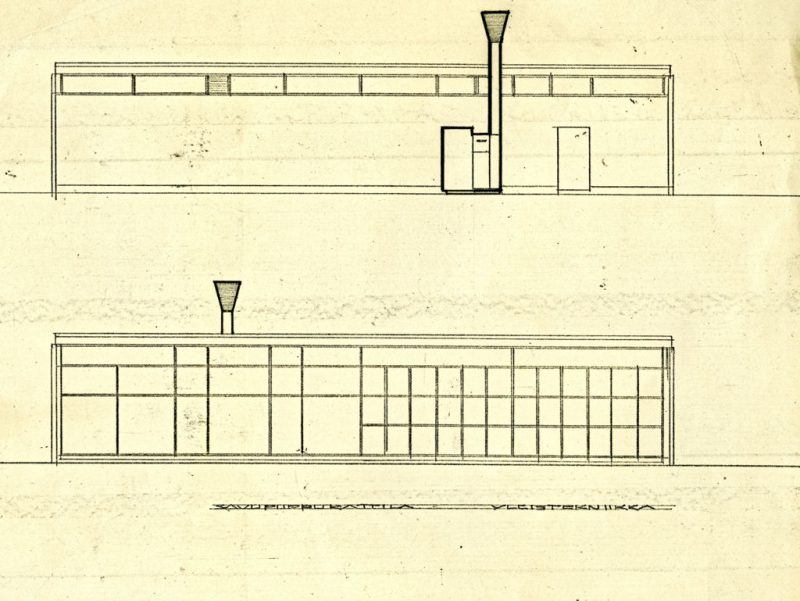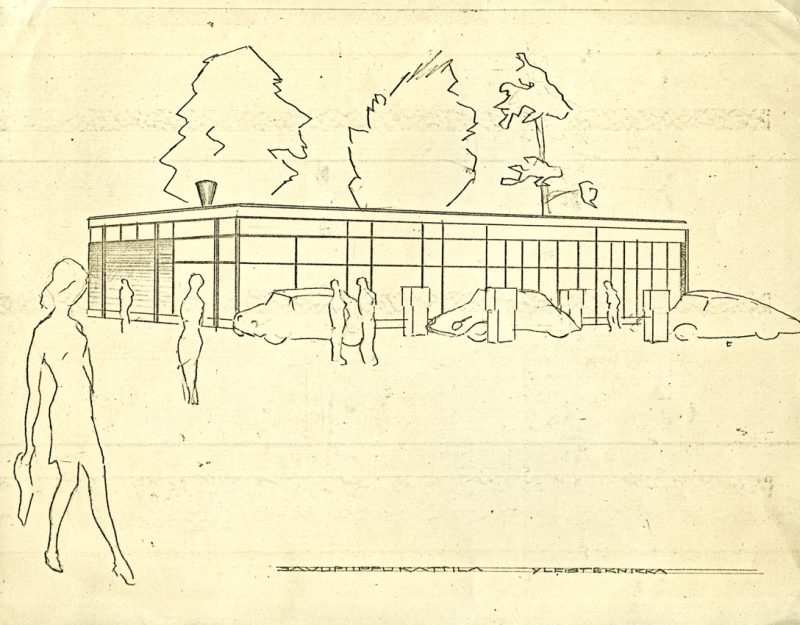Chimney boiler
In the early 1970s, gas stations got car wash and shop facilities. The aim was to add as many functions to a cramped place as possible. All eyes were on the gas station's boiler room. The general engineering brainstorming session focused on designing a heating and hot water unit that would operate outdoors. This is how the chimney boiler was born.
Since a chimney is always needed, it was considered possible to build a boiler that also operates as a chimney.
A) The top part of the chimney is an expansion tank with a flue stack in the middle.
B) A hot water heater unit was hidden in the chimney casing.
C) The lowest part of the chimney was a boiler unit with the oil burner facing upwards. This resulted in a cylindrical combustion chamber, where the flame directed towards it gave good efficiency. External thermal insulation, which is also mandatory for a standard metal chimney, eliminated heat losses.
D) An electrical cabinet and a circulating water pump were connected to the side of the chimney boiler. Water and heat pipes were routed through the wall into the building.
The appliance was suitable for renovating wood-heated buildings. The chimney boiler was patented, but as it was too bold and unusual, it did not find a manufacturer.

